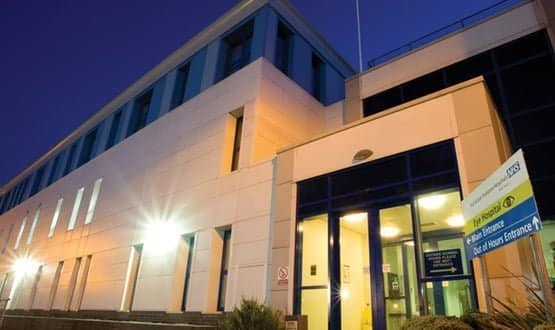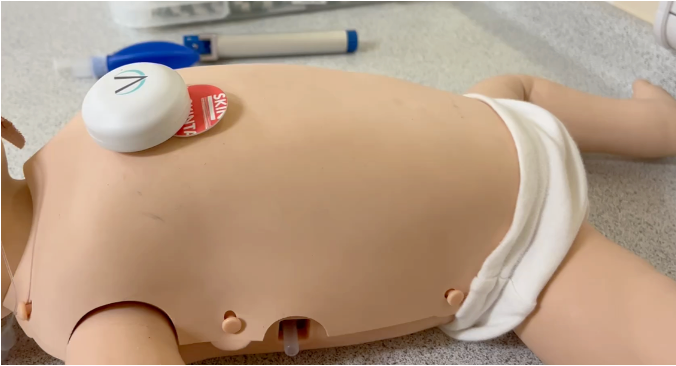CCIO profile: Dr Mark Simpson
- 21 March 2013

Clinical engagement in IT and informatics is not a new concept at Hull and East Yorkshire Hospitals NHS Trust, according to its recently-appointed chief clinical information officer.
“Clinicians were always involved in some sense,” reports Dr Mark Simpson. “But it was not really at a senior level or at a directing level with enough hours to devote to the detail.
“That’s the problem for clinicians,” he continues. “They’ve got a day job, and sometimes quite an extensive night and weekend job.
“All these long procurement processes and deployment processes can challenge clinical staff to be physically available for meetings, for reading PIDs [project initiation documents]… all that sort of thing.”
It is an issue of which Dr Simpson has personal experience. “I’ve always been involved in IT – it was probably my career if medicine hadn’t drawn me so powerfully – and from my senor house officer role I was involved in databases and spreadsheets,” he explains.
“But trying to get through your registrar career really tends to pull you towards just reading about medicine! You don’t really have that much time to go inventing new databases. I came back to it once I became a consultant.”
Not just a CCIO, but CIOs as well
By 2011, freeing up clinicians to get involved in IT was a real issue for the trust. “There had been discussions for the previous two or three years about more heavily clinically-orientated IT projects,” explains Dr Simpson.
“Basically, there had been concerns in the past that projects had been deployed, and then clinicians felt it could have been done slightly differently.”
It was in this context that Dr Simpson, a consultant in the trust’s emergency department, attended EHI Live 2011.
“There were some good presentations from CCIOs at that conference,” he remembers. “It was really from there, and from further discussions with EHI staff, that the idea of a trust-centred chief clinical information officer role came about.
“We had already been interested in having more clinical input – we’ve got a great chief executive whose vision is to get true clinical engagement – and the two just married up really well together.”
Fast forward just over a year, and the trust not only has a CCIO in post (Dr Simpson was appointed to the role late last year) but also clinical information officers in each of its healthcare divisions.
That approach was one on which Dr Simpson was particularly keen. “I didn’t think that one individual could understand all facets of IT within a complex, large university teaching hospital,” he explains.
“So, as of December 2012, we’ve got a team working for the executive of a CCIO and four CIOs. And that band, that group, really will be the core clinical bedrock to deploy future IM&T projects.”
Three little words…
The nature of those projects can be summed up in three words and three letters: electronic patient record or EPR. “Like many other major centres, we are striving towards a much more cohesive, coordinated EPR,” confirms Dr Simpson.
In January, the trust became the second to commit to take CSC’s Lorenzo since the Department of Health agreed a new local service provider deal with the company after months of negotiation caused by the much-publicised problems with the development and deployment of the system.
While the system is central to the trust’s IM&T strategy, its CCIO says it is far from the only aspect. “It is just one part of the drive towards having a coordinated patient record that [gives] clinicians information when they require it, in whatever setting they are in, and in the format which best optimises patient care.”
To that end, the trust is also investing in initiatives including electronic whiteboards, improved radiology systems and a near-patient track and trigger e-observation system.
Dr Simpson says the value of such systems, and of a true EPR, is particularly clear to him given his area of practice.
“Being at the front end, in the emergency department, we have faced the paucity of information and how it can be detrimental to patient care.
“We’re the ones who haven’t had patient information through from primary or community care. We couldn’t get additional information regarding drug history and allergies. We sometimes even struggle to get information from within the secondary and tertiary environment.
“Unfortunately, for a significant time, the core informatics [source] has been the patient and/or the relative themselves.”
Moving away from paper
That frontline experience of informatics is one with which Dr Simpson will remain familiar. His appointment as a consultant in emergency medicine is on the basis of a 12 ‘planned activity’ job plan, with five of those PAs dedicated to his CCIO role.
“I’m still jobbing, still on the frontline, still dealing with my emergency department commitments; but the five PAs secure me a Monday, Tuesday and Wednesday morning to focus on IM&T strategy, which is fairly intensive and has been from the get-go.”
Part of the reason for that intensity, Dr Simpson argues, is that moving to an EPR represents a fundamental change.
“We have 40 years of having worked with paper, and have developed systems to best manage paper as the driving data repository,” he points out.
“But everything that works for paper undermines the whole essence of sharing. We’ve got huge sets of notes moving around the system slowly.
“They’re difficult to track, and it’s difficult to get the information out when required. Especially when it’s in a multidisciplinary approach, which much care now is.”
The key challenge he sees in dispensing with paper? Doing so safely and while keeping clinical staff engaged and on side. Dr Simpson says that if there was one top line to describe his CCIO role, it would be to foster clinical engagement.
“It’s investing time in getting the clinical team – and that’s the broadest church of clinician, practitioner, allied health professional – to be part of this process rather than being only a recipient of it.
“You’re trying to have a broad understanding; to understand the nuances for one area or one healthcare group is not always straightforward.
“It’s a debate of how best to deliver more personalised or customised features – in essence to reward an area with a much better system than just handing down an IT product.
“I want to discuss with other CCIOs how you make sure there’s no area that has not been involved. How do you make sure that every area’s engaged fully?”
It is one of many challenges in his new role, but Dr Simpson says he is relishing them. “There’s a lot to do but it’s a time of great opportunity for enthusiasts. We’ve been waiting for this for ten-plus years.”




